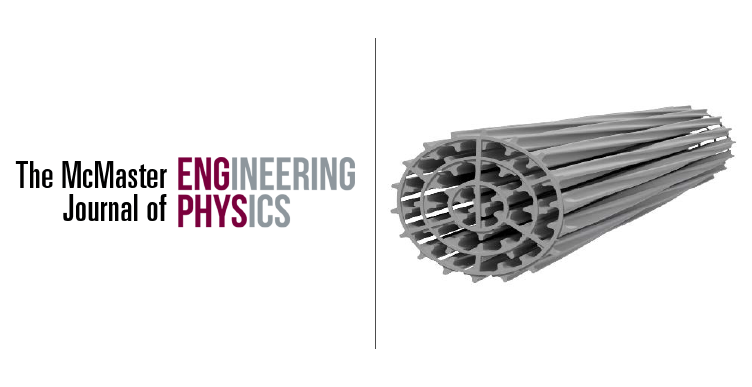Control rod worth prediction in a Materials Test Reactor by finite difference solution of the two-group point reactor kinetics equations
Abstract
A finite difference model was developed in order to predict control rod worth from a set of power measurements following an insertion of reactivity. The model is based on the solution of the point reactor kinetics equations in the two energy group formalism where thermal reactivity is varied to model the gravitational (and thus quadratic) insertion of a control rod in a scram scenario. The model was tested using power measurements from the McMaster Nuclear Reactor during the insertion of two different control rods to shut down the reactor from a low initial power. The model was found to agree with the worths of the two control rods within an order of magnitude, and fail to reproduce the decay rate in power observed for sufficiently high reactivity insertions, leading to the belief that lack of feedback effects constitutes the biggest failure in the model currently.References
Ahmed E. Aboanber, Abdallah A. Nahla, and Zeid I. Al-
Muhiameed. A novel mathematical model for two-energy groups
of the point kinetics reactor dynamics. Progress in Nuclear En-
ergy, 77(Supplement C):160{166, November 2014. ISSN 0149-
doi:10.1016/j.pnucene.2014.06.016. URL http://www.
sciencedirect.com/science/article/pii/S0149197014001814.
L. Shampine and C. Gear. A Users View of Solving Sti Ordinary
Dierential Equations. SIAM Review, 21(1):1{17, January 1979.
ISSN 0036-1445. doi:10.1137/1021001. URL http://epubs.siam.
org.libaccess.lib.mcmaster.ca/doi/abs/10.1137/1021001.
Downloads
Published
2018-01-16
Issue
Section
Articles
License
Authors who publish with this journal agree to the following terms:Authors retain copyright and grant the journal right of first publication with the work simultaneously licensed under a Creative Commons Attribution License that allows others to share the work with an acknowledgement of the work's authorship and initial publication in this journal.
Authors are able to enter into separate, additional contractual arrangements for the non-exclusive distribution of the journal's published version of the work (e.g., post it to an institutional repository or publish it in a book), with an acknowledgement of its initial publication in this journal.
Authors are permitted and encouraged to post their work online (e.g., in institutional repositories or on their website) prior to and during the submission process, as it can lead to productive exchanges, as well as earlier and greater citation of published work.


